Abstract
Intravenous inoculation of Aspergillus fumigatus spores was used to study experimentally induced and natural resistance. Slight resistance resulted in increased survival time and higher resistance produced in addition a decreased infection rate.
Sublethal doses of living spores gave significant protection against challenge 3 weeks later, but large doses of heat-killed spores had no demonstrable effect.
Mice from one source showed a single, dramatic decrease in dose response to a deep-frozen strain of the organism over a period of 34 months. The dose response initially resembled that described by Scholer (1959) in which one million spores killed the majority of mice. The change was almost certainly due to an increase in resistance of the mice due to environmental factors, and the resistance was probably also effective against other strains of the organism. Although not proved, it seemed likely that the resistance was due to increased natural contact with A. fumigatus or related fungi. Possibly for a similar reason, mice of the same stock bred on different premises differed in their susceptibility to infection. The results indicated that environmental resistance-producing factors may have been operating simultaneously on a number of premises housing laboratory animals in south-east England. These findings may have significance in relation to the occurrence of natural aspergillosis of mammals and birds.
Of five A. fumigatus strains, four were of closely similar virulence; the fifth strain grew more slowly in vitro and was somewhat less virulent. Isolates from mice which died sporadically after small doses of spores were of no greater virulence than the inoculated strain. Although the susceptibility of mice aged 3 weeks was not uniform under all conditions, such animals were less resistant than young adult mice. Mice from six different sources showed only slight differences in susceptibility between each other, or from mice known to have developed a natural resistance.
Full text
PDF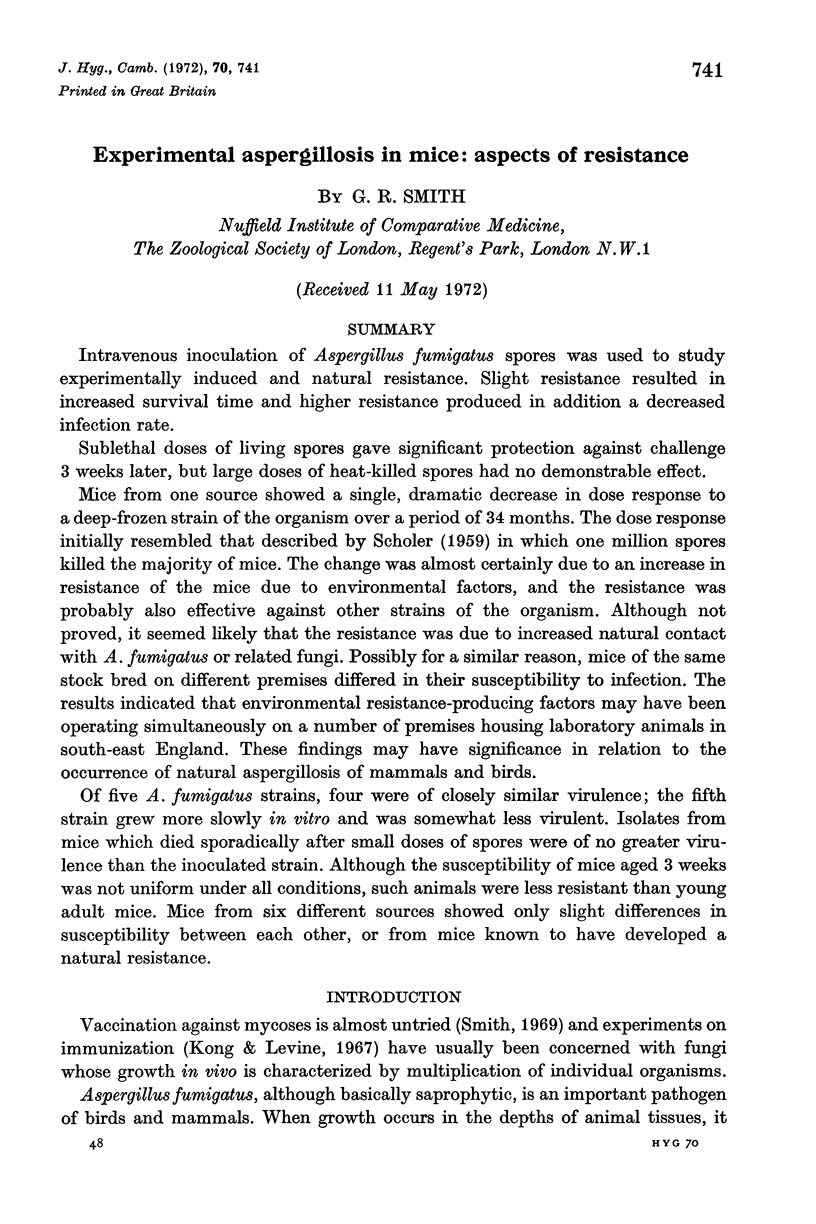
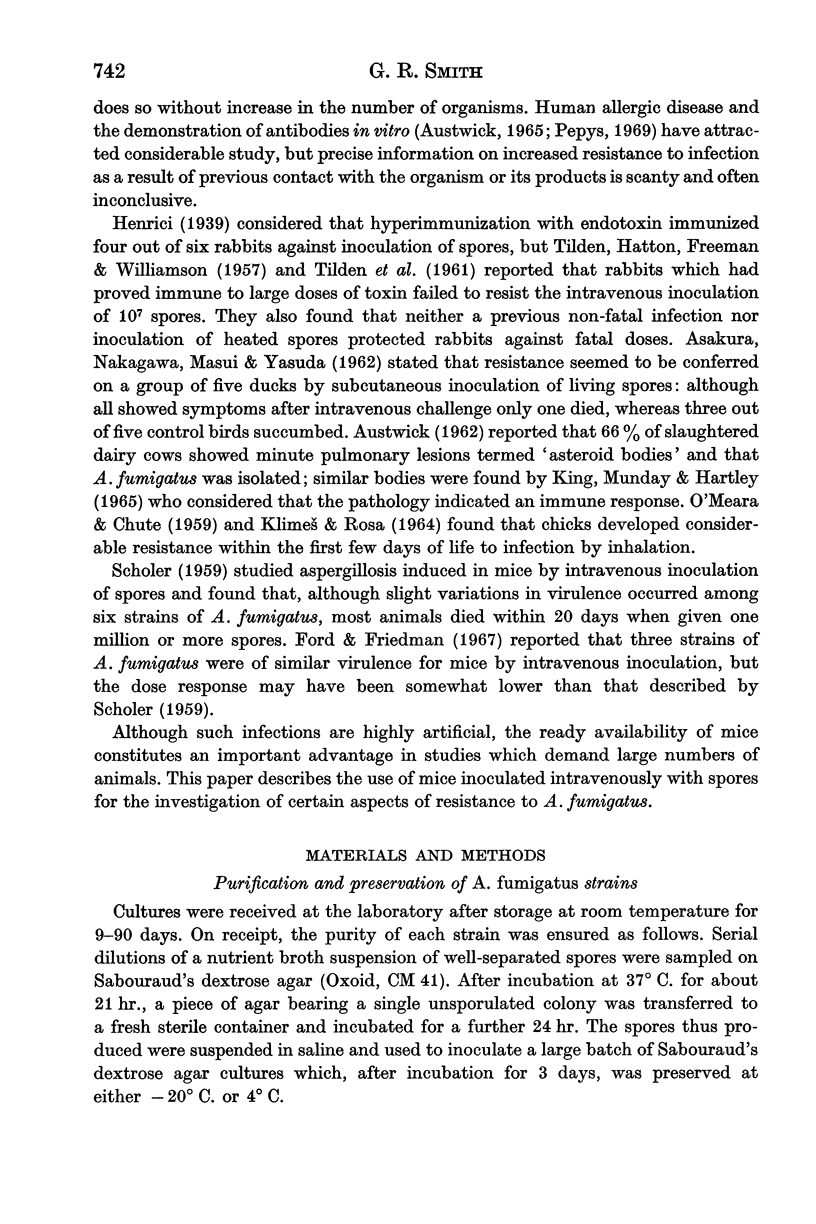
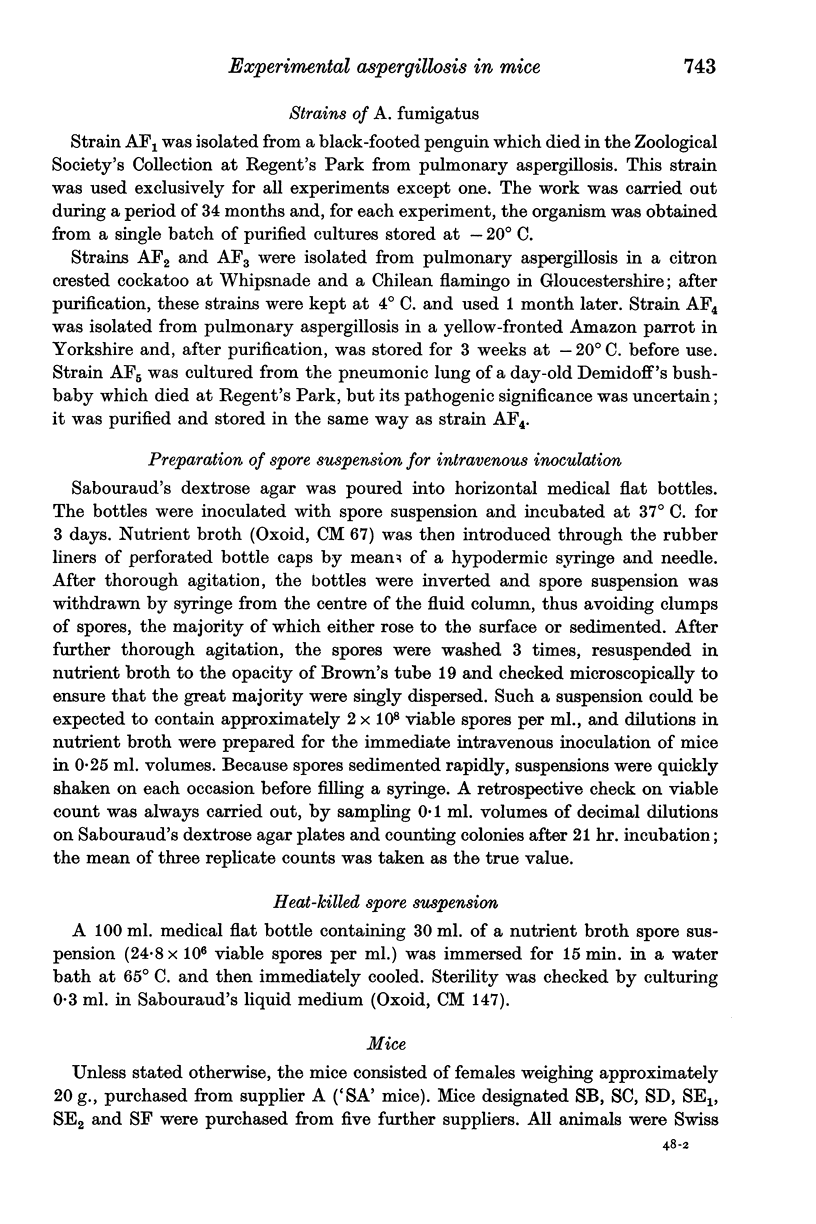
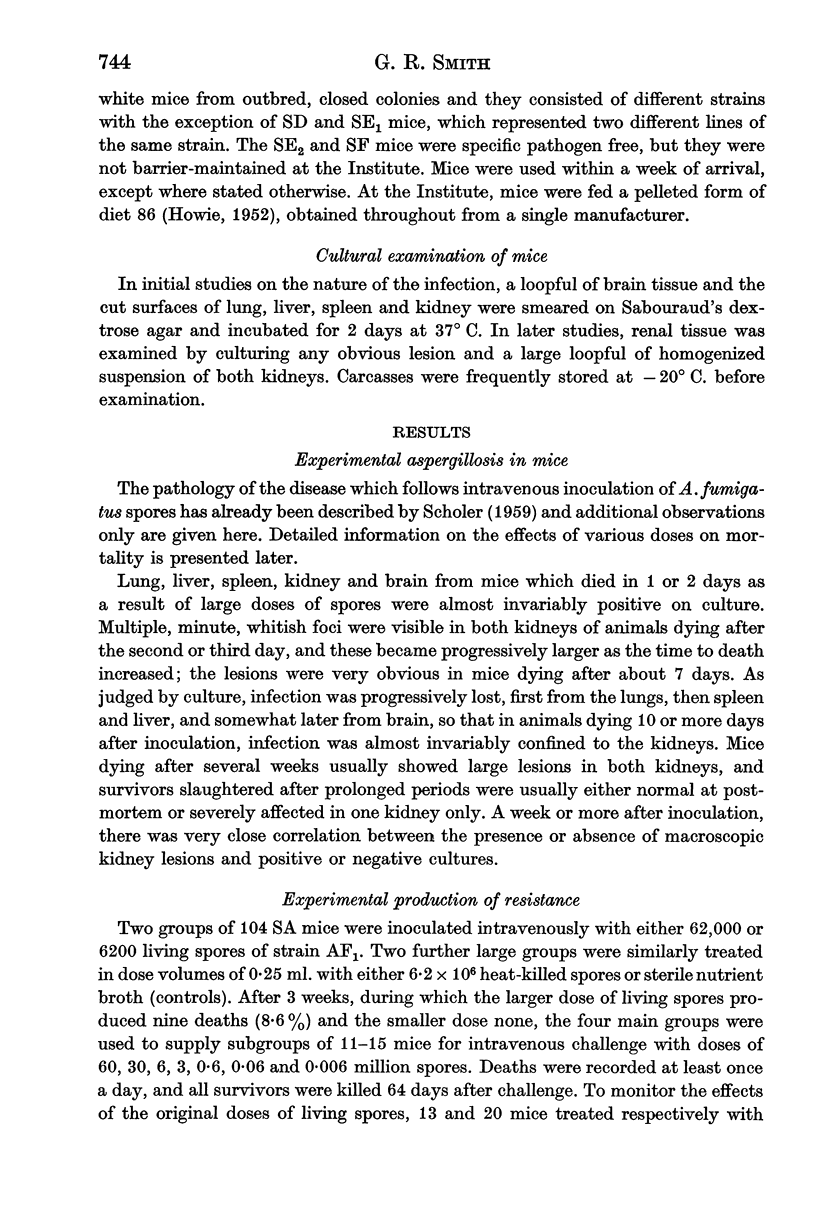
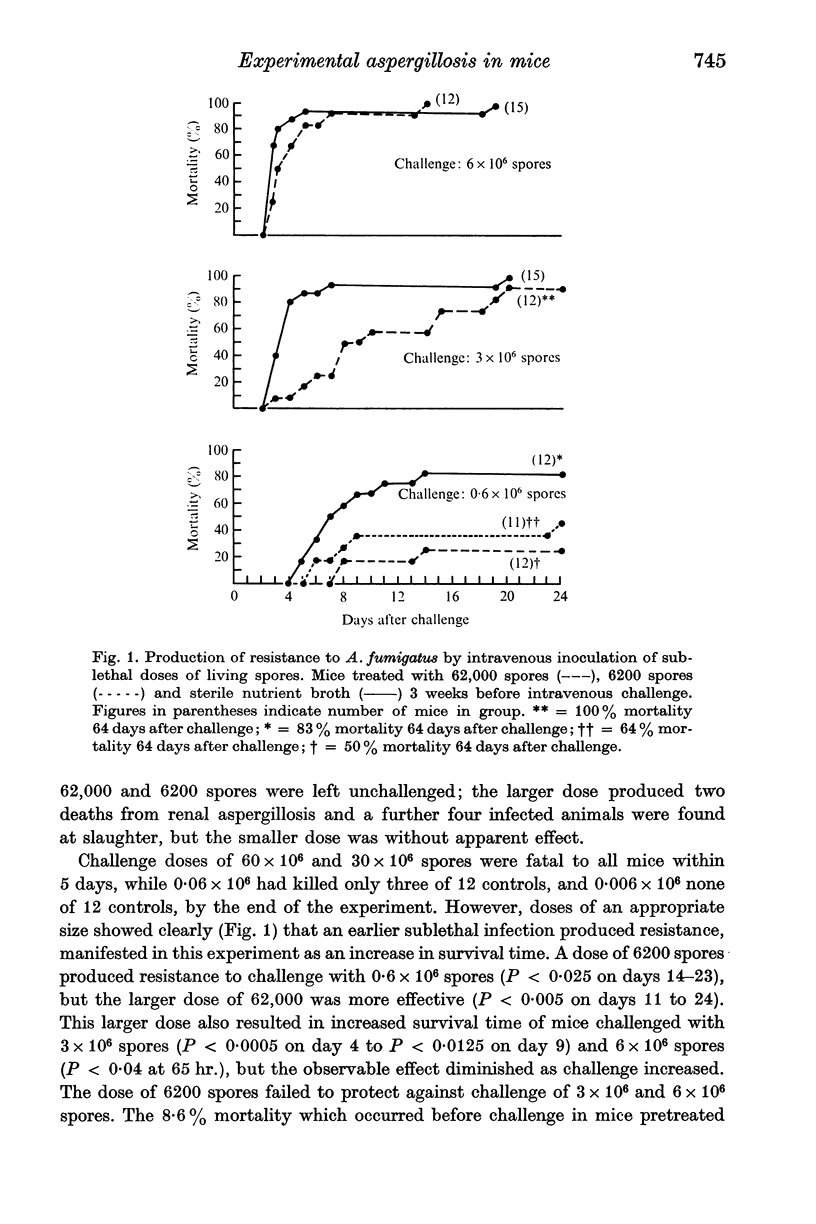
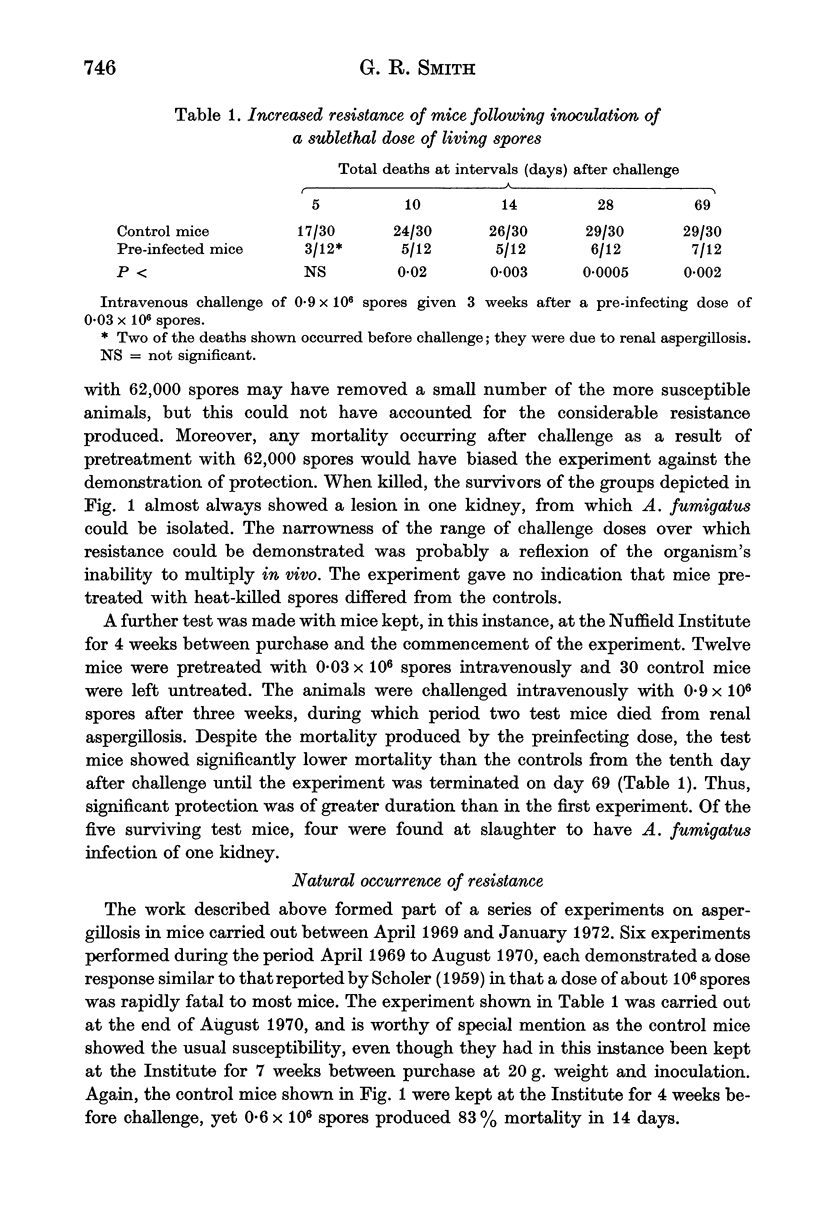
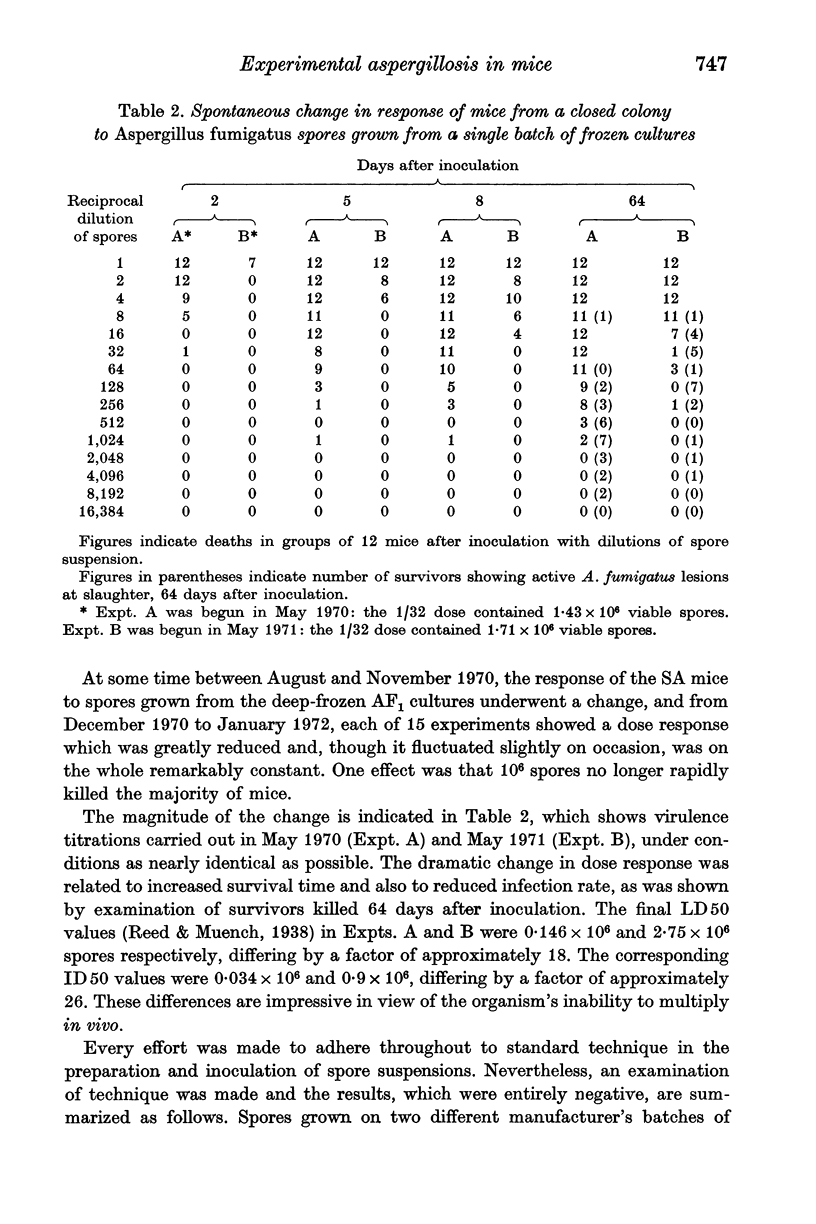
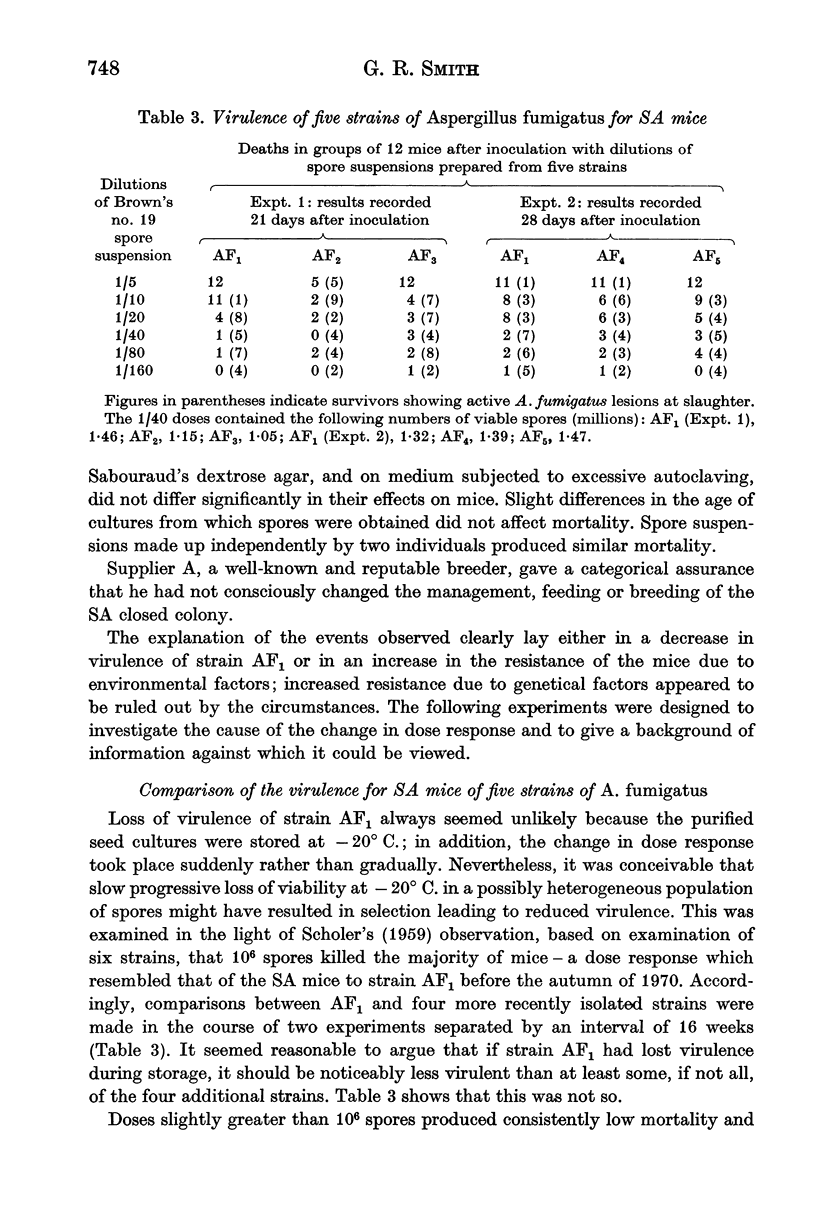
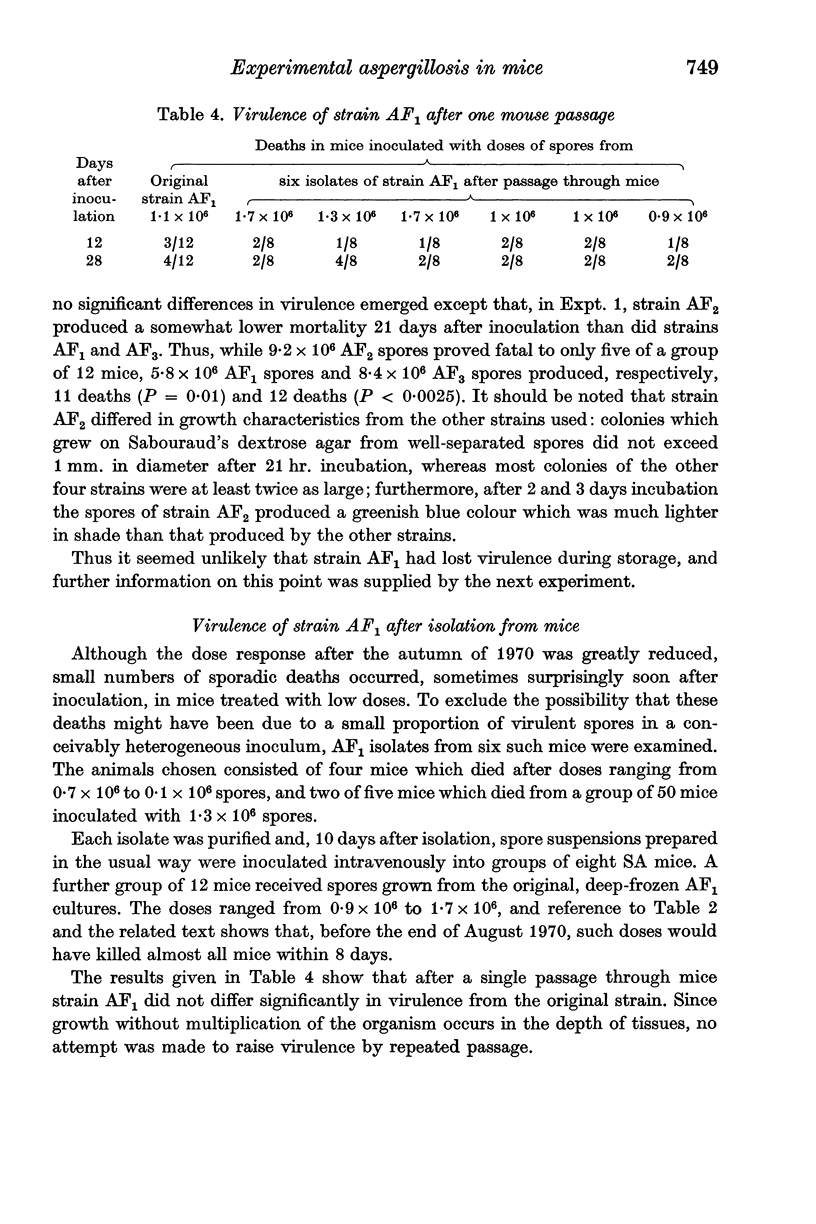
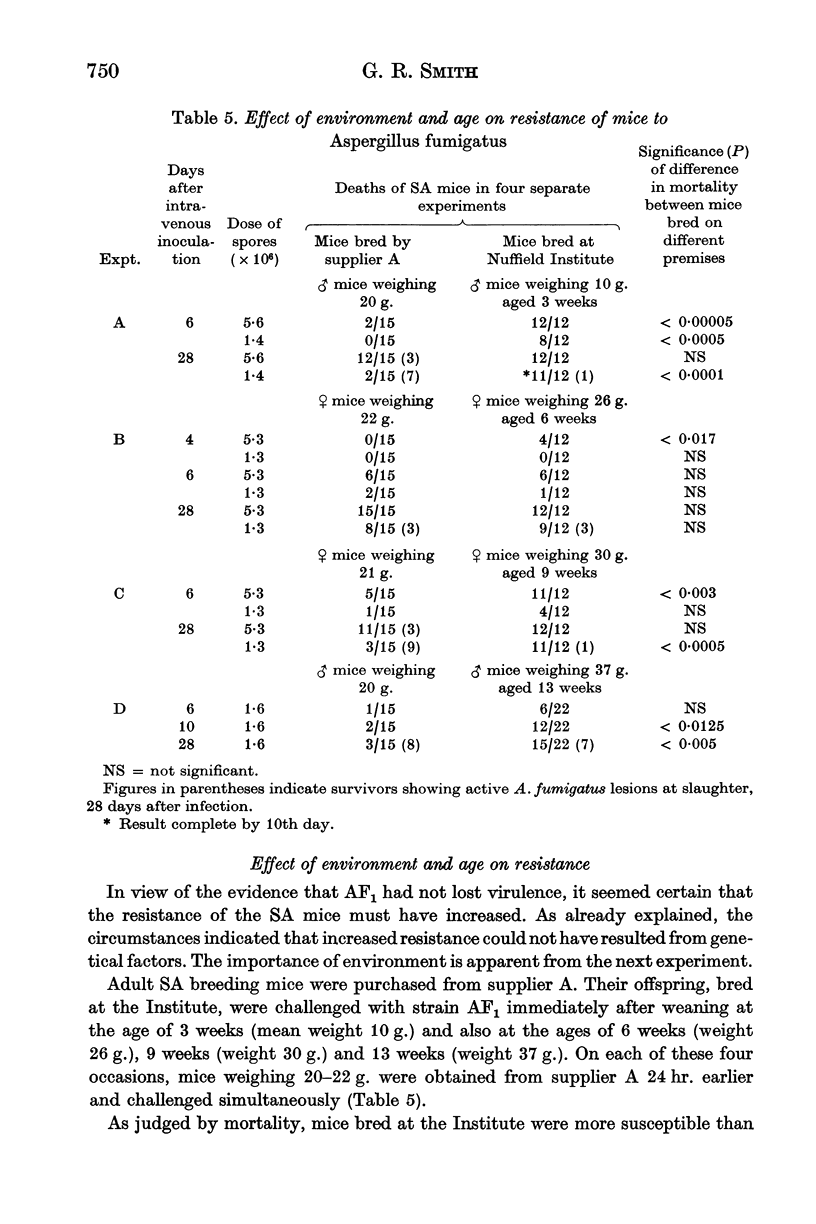
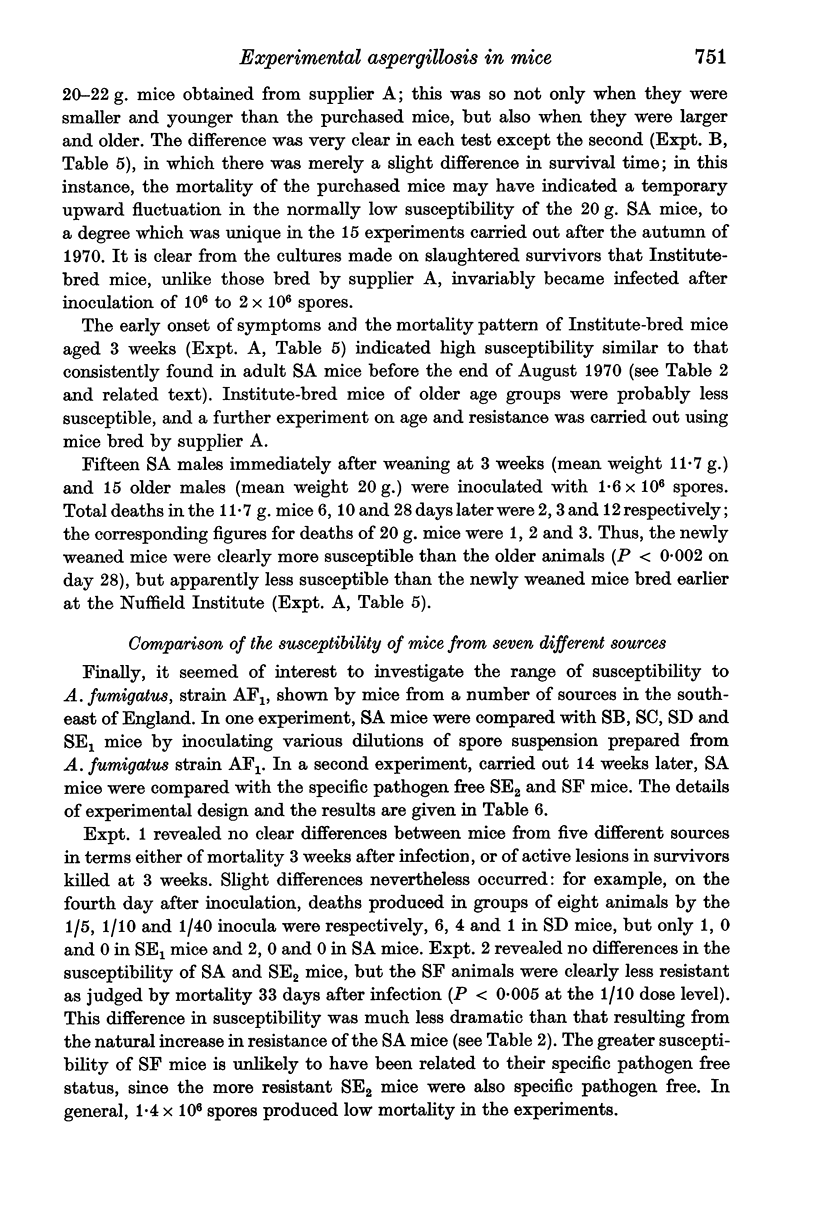
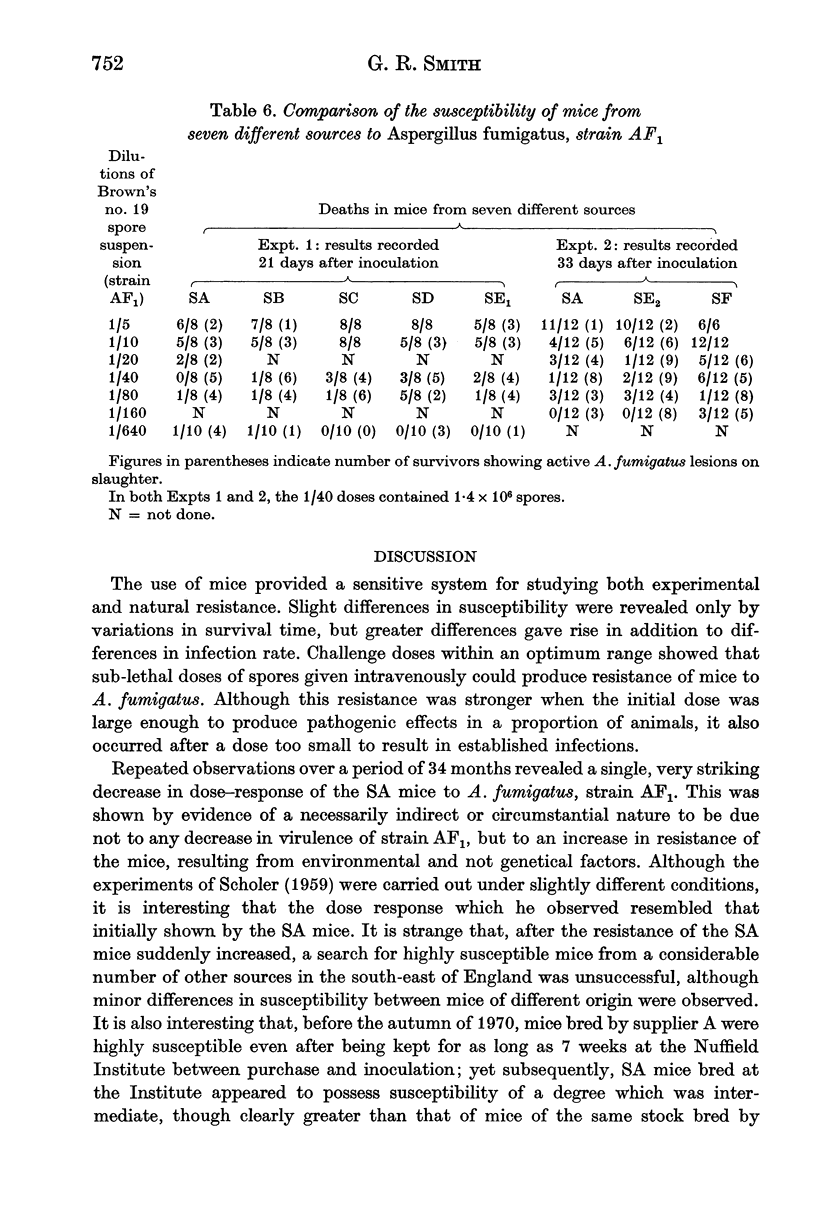
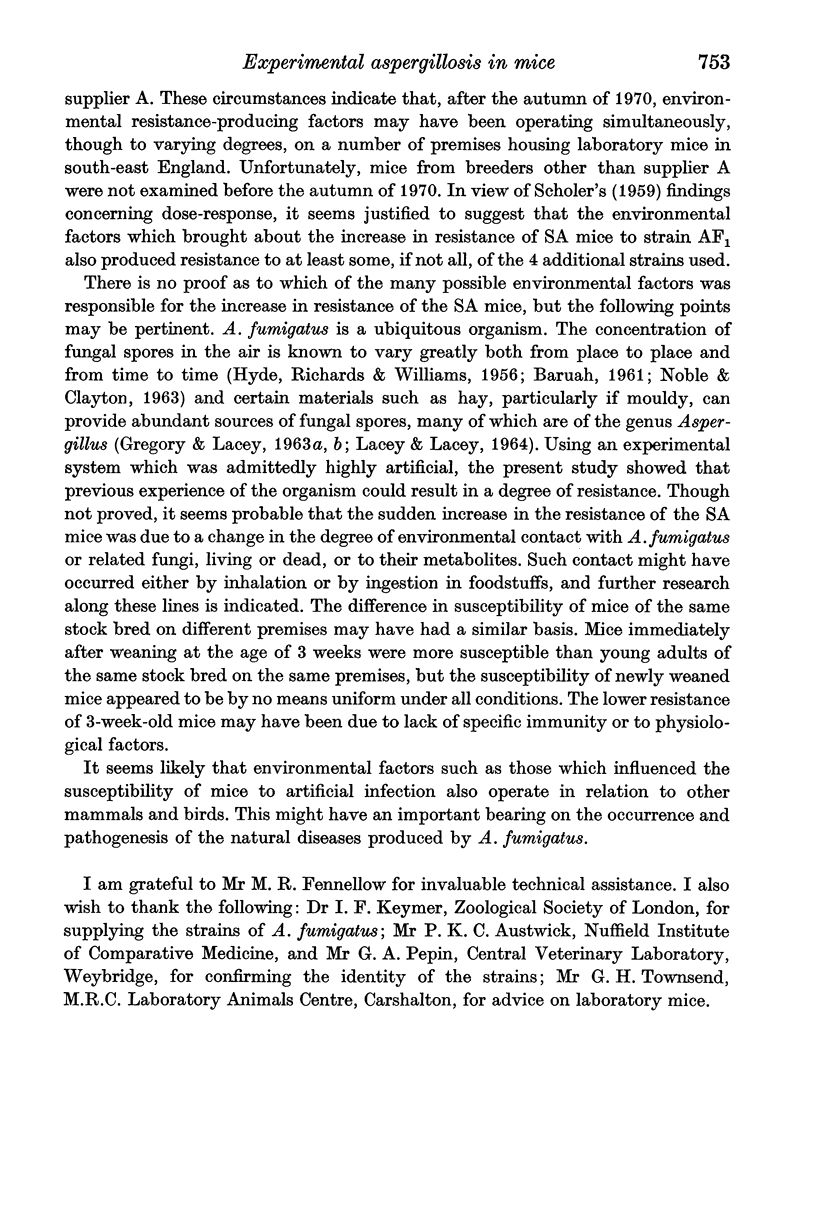
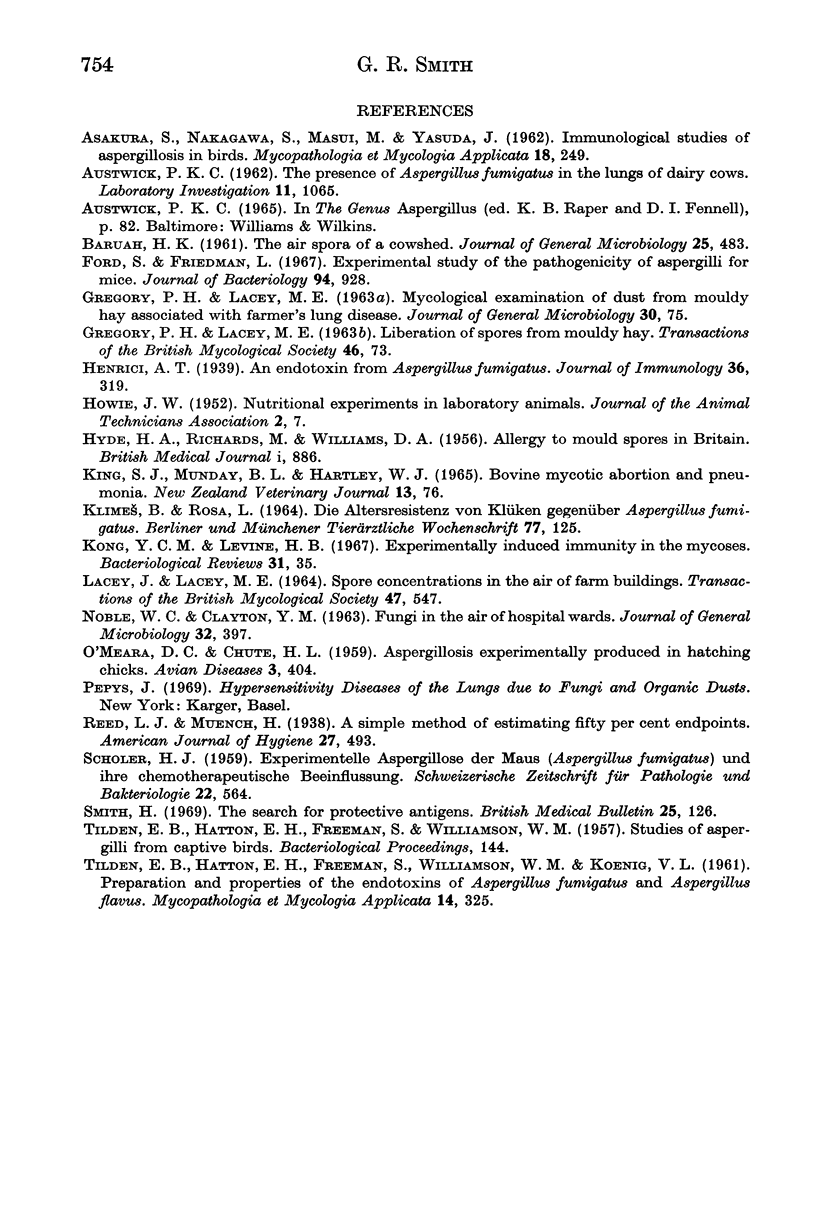
Selected References
These references are in PubMed. This may not be the complete list of references from this article.
- ASAKURA S., NAKAGAWA S., MASUI M. IMMUNOLOGICAL STUDIES OF ASPERGILLOSIS IN BIRDS. Mycopathol Mycol Appl. 1962 Dec 30;18:249–256. doi: 10.1007/BF02051444. [DOI] [PubMed] [Google Scholar]
- AUSTWICK P. K. The presence of aspergillus fumigatus in the lungs of dairy cows. Lab Invest. 1962 Nov;11:1065–1072. [PubMed] [Google Scholar]
- BARUAH H. K. The air spora of a cowshed. J Gen Microbiol. 1961 Jul;25:483–491. doi: 10.1099/00221287-25-3-483. [DOI] [PubMed] [Google Scholar]
- Ford S., Friedman L. Experimental study of the pathogenicity of aspergilli for mice. J Bacteriol. 1967 Oct;94(4):928–933. doi: 10.1128/jb.94.4.928-933.1967. [DOI] [PMC free article] [PubMed] [Google Scholar]
- GREGORY P. H., LACEY M. E. Mycological examination of dust from mouldy hay associated with farmer's lung disease. J Gen Microbiol. 1963 Jan;30:75–88. doi: 10.1099/00221287-30-1-75. [DOI] [PubMed] [Google Scholar]
- HYDE H. A., RICHARDS M., WILLIAMS D. A. Allergy to mould spores in Britain. Br Med J. 1956 Apr 21;1(4972):886–890. doi: 10.1136/bmj.1.4972.886. [DOI] [PMC free article] [PubMed] [Google Scholar]
- King S. J., Munday B. L., Hartley W. J. Bovine mycotic abortion and pneumonia. N Z Vet J. 1965 Jun;13(3):76–76. doi: 10.1080/00480169.1965.33602. [DOI] [PubMed] [Google Scholar]
- Kong Y. C., Levine H. B. Experimentally induced immunity in the mycoses. Bacteriol Rev. 1967 Mar;31(1):35–53. doi: 10.1128/br.31.1.35-53.1967. [DOI] [PMC free article] [PubMed] [Google Scholar]
- NOBLE W. C., CLAYTON Y. M. FUNGI IN THE AIR OF HOSPITAL WARDS. J Gen Microbiol. 1963 Sep;32:397–402. doi: 10.1099/00221287-32-3-397. [DOI] [PubMed] [Google Scholar]
- Smith H. The search for protective antigens. Br Med Bull. 1969 May;25(2):126–130. doi: 10.1093/oxfordjournals.bmb.a070680. [DOI] [PubMed] [Google Scholar]
- TILDEN E. B., HATTON E. H., FREEMAN S., WILLIAMSON W. M., KOENIG V. L. Preparation and properties of the endotoxins of Aspergillus fumigatus and Aspergillus flavus. Mycopathol Mycol Appl. 1961 Aug 19;14:325–346. doi: 10.1007/BF02051548. [DOI] [PubMed] [Google Scholar]


